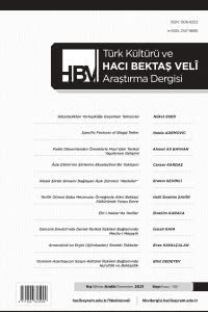Osmanlılarda haberleşme ve tören ocağı: Peykân-i Hassa
Osmanlı Devletinde hem toplum hem de devlet hayatında önemli bir görevli olan peykler devlet tarafından kurumsallaştırılarak Peykân-ı Hassa adı verilen bir ocak çerçevesinde hizmet vermişlerdir. Ocağın ulaklık görevi dışında bazı İslami törenlerde istihdam edildiği görülmektedir. Ocak mensuplarından bir kısmı müjdeci adı ile tesmiye edilmiş ve İstanbuldan Mekkeye giden hacıların karşılaştığı olaylarla ilgili olarak padişaha haberler getirmişlerdir. Her yıl müjdecibaşılar aracılığıyla Mekkede bulunan muhtelif kişilere ferâş-ı şerife ve zevrak mektupları gibi muhtelif hediyeler gönderilmiştir. Bu mektuplardan zevrak mektubu Mekkede zevrak denen testi ile hacılara zemzem suyu dağıtan hademeye, ferâşet mektubu ise Kâbenin temizlik işlerini yapan şahsa yaptıkları bu kutsal işten dolayı gönderilen hediyeyi bildiren mektuplardır. Ramazan ve Kurban bayramlarında ise altın ve gümüşlerle tezyin edilmiş elbiseler giyerek devlet-toplum kaynaşmasına önemli bir katkı sağladığını düşündüğümüz törenler icra etmişlerdir. Peykân-ı Hassa Ocağı mensuplarının sayıları her zaman aynı olmayıp zaman zaman artma veya azalmalar olmuştur. Ocak mensupları için mevsimine göre muhtelif kumaşlardan elbise ve aksesuar imal edilmiştir. Ocak için yapılan bütün masraflar İstanbul Duhan Gümrüğü Mukataasından karşılanmıştır. Ocak mensuplarının başlarında tas denen kask ile destar-ı bendi denen sarık ve kavuk, üzerlerinde ise Musul orijinli don, Bursa orijinli entari ve İngiliz orijinli dolama bulunmaktadır. Ellerinde teber, bellerinde kuşak ve hançer, kask ve tabancalarında ise sorguç bulunmaktadır.
The corps of communication and ceremonies in the Ottomans: Peykân-i Hassa
Peykân, one the most important offices for the Ottomans both at social and governmental status, served as corps and was called as Peykân-ı Hassa. As well as communication, it was employed at some Islamic ceremonies. Some members of the corps were called as harbingers and they took messages to the Padishah concerning events which some pilgrims faced during their pilgrimage from Istanbul to Mecca. Every year, various gifts such as zevrak and ferâş-ı şerife letters were sent to some people in Mecca with the chief harbingers. The zevrak letter was sent to the care taker giving zamzam water (a famous well very near the Kaaba in Mecca) to the pilgrims in Mecca. And the ferâş-ı şerife letter was sent to the janitor at Kaaba to tell them they were sent gifts for doing very good deeds. They used to wear golden, silver or silver gilded, decorated dresses at festivals of Ramadan and Sacrifice and perform ceremonies that, we believe, contributed a lot to a state-people mergence. The number of the members of the peykânı hassa corps were not always the same, so their number either increased or decreased at times. For the members of the corps, various kinds of dresses and accessories were made for each season from different kinds of materials. The total cost of expenses was met by Tobacco Customs Mukataa of Istanbul. Members of the corps wore a helmet called tas and a turban called destarıbendi on their heads and a don of Musul origin, a dolama of Bursa origin on their bodies. There were axes in their hands, girdles and daggers around their waists and aigrettes on their helmets and pistols.
___
a) Arşiv Kaynakları/ Başbakanlık Osmanlı ArşiviCevdet Askeriye C.. AS..
Cevdet Evkaf C.. EV..,
Cevdet Dahiliye C.. DH..,
Cevdet Maliye C.. ML.,.
Cevdet Saray C.. SM..
Dosya Usulü İrade Tasnifi DUIT
Evkaf Defteri EV. d.
Hatt-ı Hümâyûn HAT
İrade Dahiliye I. DH..
İrade Meclis-i Vâlâ I. MVL.
Sadâret Mektubi Kalemi A. MKT
Sadâret Mektubi Kalemi Mühimme A. MKT. MHM.
Sadâret Mektubi Kalemi Nezaret ve Deâvî A. MKT. NZD.
Sadâret Mektubi Kalemi Umum Vilayet A. MKT. UM.
b) Diğer Kaynaklar
Atalar, Münir. (1999). Osmanlı Devletinde Surre-i Hümâyûn ve Surre Alayları. Ankara: Türkiye Diyanet Vakfı Yayını.
Devellioğlu, Ferit. (1962). Osmanlıca-Türkçe Ansiklopedik Lügat, Ankara.
GÜNAY, Ünver. (2003). XV. Yüzyıl Osmanlı Toplumunda Sosyo-Kültürel Yapı, Din ve Değişme, Sosyal Bilimler Enstitüsü Dergisi (14), Yıl : 2003/1: 21-48.
http://www.hubyar.net/index.php?option=com_content&view=article&id=129&Item id=97-Banaz Türkmen Kurultayı. 03.07.2010.
Memiş, Ekrem.(2008).Türk Kültür Tarihî (Türk Kültüründen Bazı Kesitler), Konya: Çizgi Yayınevi.
SAK, İzzet ve Cemal ÇETİN. (2005). XVII. ve XVIII. Yüzyıllarda Osmanlı Hac Menzilleri, Selçuk Üniversitesi İlahiyat Fakültesi Dergisi (19): 199- 260.
SARIKAYA, M. Saffet. (2010). Osmanlı Toplumunun Dinî Yapısına Bir Bakış Denemesi: Ahilik-Bektâşîlik İlişkisi I, http://www.msaffets.com/wp-content/uploads/Ahbek1.pdf. 1-14. 03.07. 2010.
Uzunçarşılı, İsmail Hakkı. (1988). Osmanlı Devletinin Saray Teşkilatı, Ankara: TTK
- ISSN: 1306-8253
- Yayın Aralığı: Yılda 4 Sayı
- Başlangıç: 1994
- Yayıncı: Ankara Hacı Bayram Veli Üniversitesi Türk Kültürü Açısından Hacı Bektaş-ı Veli Araştırmaları Uygulama ve Araştırma Merkezi
Sayıdaki Diğer Makaleler
Alevîliğin sosyolojik öğretimi
Alevi-Bektaşi geleneğinde dârdan indirme cemi ve bu cemin toplum yaşamındaki önemi
Alevi-Bektaşi Türkmen geleneğinde sosyal dayanışma ve kardeşlik kurumu olarak Musahiplik
Şehitlik tekkesi ve Şeyh Ali Baba vakfiyesi
Türk el sanatlarında kullanılan nazar motifleri ve Alevilerde nazar inancı
Bektaşi fıkralarının mizah anlayışı ve işlevi bağlamında bireysel ve toplumsal ruh sağlığı
Alman kaynaklarında Bektaşilik-Aalevilik
Türk edebiyatında Hz. Ali mevlidleri
